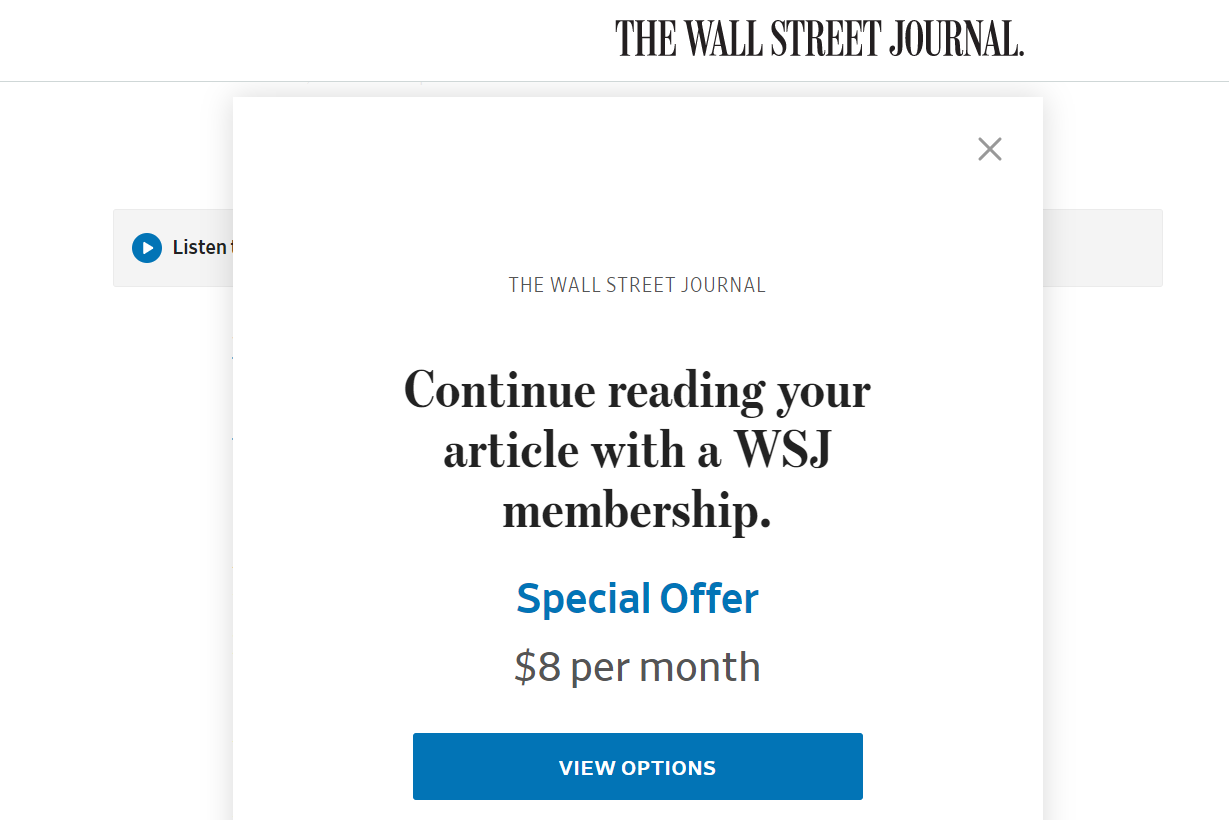Facts aren’t free: Why do the largest news organizations have paywalls?

The New York Times. The Washington Post. The Wall Street Journal. The Atlantic. These are among the top twenty most popular news websites and tend to be the first choice for readers looking for trustworthy news. They also all have paywalls. Publishers are leaning into paywalls rather than featuring paid advertising, placing the burden of financial support on the readers. But when did paywalls get so commonplace? And is it ethical to limit access to information only to those that can pay for it?
When digital media became the norm in the 1990s, mass media networks started uploading the news onto websites for readers to access, subsequently losing revenue they would have made from print sales and subscriptions. Many turned to ad revenue to make up for this loss of profits, but it became ineffective when users started to install ad-blockers in their browsers. The Wall Street Journal was the first to implement a “hard paywall” back in 1996, which required readers to signup for a subscription or be blocked from accessing any content. Since then, “metered paywalls” have started to become commonplace, wherein readers can access a limited number of articles per month unless they subscribe for unlimited content. As of 2019, more than two-thirds of leading newspapers use some kind of online paywall.
To be fair, journalists have to get paid somehow, and paywalls can generate that income. Plus, media outlets don’t have to rely on clicks to make a profit, and they don’t have to lean on churning out clickbait in the hopes that it will increase traffic on their sites. But how will accurate information reach those that can’t afford to pay for all of these subscriptions? And if we settle into the concept that knowledge is money, what impact does that have on a country with a tremendous gap in wealth inequality?
Misinformation has always lurked in media, but over the past decade, it seems to be more of a pressing issue. I remember being in the hallways in school and hearing claims that Obama was not born in America, that he was Kenyan and a Muslim. Hearing this kind of “fake news” felt so distant at the time, partly because the claims were easily debunked and clearly rooted in racism and xenophobia, but also because it was seemed to be coming from radical extremists in their faraway corner of the internet. But ever since March 2020, with the widespread shutdown of the COVID-19 pandemic, misinformation is easier to access than actual investigative journalism.
The prevalence of misinformation could be best demonstrated with a cursory Google search for COVID-19 symptoms and suggested safety precautions. This tends to yield the following: CDC guidance, countless websites claiming that COVID can be treated by consuming dewormer paste for horses, and plenty of trustworthy and fact-driven articles from sources like The New York Times and The Washington Post that you can’t access without a subscription. It doesn’t help that mass outlets like Fox News have been airing every night that the vaccine is poison, despite the fact that every single anchor and reporter that appears on-screen is fully vaccinated. What is the average Joe supposed to believe when all the facts are hidden behind a paywall?
Furthermore, education in America is already reserved for the wealthy, putting lower-income families and people of color at an unfair advantage. Reserving access to trustworthy news doesn’t affect the top 10%, the group that controls 70% of the country’s wealth, it only hurts those that can’t afford it. Paywalls just exaggerate the growing education gap.
This puts journalists and media outlets in a jam, and forces us all to face an uncomfortable question; how can we keep information accessible in an increasingly profit-driven society?



























